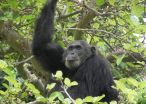(Press-News.org) MADISON, Wis. -- In a study published March 9 in Nature Chemistry, University of Wisconsin-Madison chemistry Professor Kyoung-Shin Choi presents a new approach to combine solar energy conversion and biomass conversion, two important research areas for renewable energy.
For decades, scientists have been working to harness the energy from sunlight to drive chemical reactions to form fuels such as hydrogen, which provide a way to store solar energy for future use. Toward this end, many researchers have been working to develop functional, efficient and economical methods to split water into hydrogen, a clean fuel, and oxygen using photoelectrochemical solar cells (PECs). Although splitting water using an electrochemical cell requires an electrical energy input, a PEC can harness solar energy to drive the water-splitting reaction. A PEC requires a significantly reduced electrical energy input or no electrical energy at all.
In a typical hydrogen-producing PEC, water reduction at the cathode (producing hydrogen) is accompanied by water oxidation at the anode (producing oxygen). Although the purpose of the cell is not the production of oxygen, the anode reaction is necessary to complete the circuit. Unfortunately, the rate of the water oxidation reaction is very slow, which limits the rate of the overall reaction and the efficiency of the solar-to-hydrogen conversion. Therefore, researchers are currently working to develop more efficient catalysts to facilitate the anode reaction.
Choi, along with postdoctoral researcher Hyun Gil Cha, chose to take a completely new approach to solve this problem. They developed a novel PEC setup with a new anode reaction. This anode reaction requires less energy and is faster than water oxidation while producing an industrially important chemical product. The anode reaction they employed in their study is the oxidation of 5-hydroxymethylfurfural (HMF) to 2,5-furandicarboxylic acid (FDCA). HMF is a key intermediate in biomass conversion that can be derived from cellulose -- a type of cheap and abundant plant matter. FDCA is an important molecule for the production of polymers.
Biomass conversion can offer a viable pathway to generate chemicals used in industrial processes without using petroleum products. Conventional biomass conversion processes use high-pressure oxygen for the conversion of HMF to FDCA at high temperatures. Choi and Cha, however, developed an efficient electrochemical method to oxidize HMF to FDCA at room temperature and ambient pressure using water as the oxygen source. Then they employed this oxidation reaction as the anode reaction of the PEC that produces hydrogen at the cathode. By doing so, they demonstrated the utility of solar energy for biomass conversion as well as the feasibility of using an oxidative biomass conversion reaction as an anode reaction in a hydrogen-forming PEC.
"Since the photoelectrochemical cell is built for the purpose of hydrogen production and HMF oxidation simply replaces oxygen production at the anode, in essence, no resources are used specifically for HMF oxidation," says Choi.
In other words, FDCA is a bonus byproduct from a PEC that generates hydrogen. The production of FDCA, a valuable chemical, at the anode lowers the production cost for hydrogen. This new approach therefore presents new possibilities for research in both solar conversion and biomass conversion.
"When we first started this study, we were not sure whether our approach could be really feasible," Choi says. "However, since we knew that the impact of the study could be high when successful, we decided to invest our time and effort on this new research project at the interface of biomass conversion and solar energy conversion."
Developing and optimizing every piece of the full solar cell setup demonstrated in the study took the researchers about two years. Choi expects that the development of more diverse and efficient electrochemical and solar-driven biomass conversion processes will increase the efficiency and utility of solar-fuel-producing PECs.
INFORMATION:
CONTACT: Kyoung-Shin Choi, 608-262-5859, kschoi@chem.wisc.edu
Libby Dowdall, ldowdall@chem.wisc.edu, 608-265-9814
From AGU's blogs: More urban heat; less summer fog, on California coast
The summer fog that shrouds coastal southern California - what locals call the June Gloom - is being driven up into the sky by urban sprawl, according to scientists who have studied 67 years of cloud heights and urban growth in the region. Less fog may, at first, seem like a good thing. But less fog is bad news for native plants in the coastal hills and mountains, which depend on the cool fog as their only source of water during the rainless summer months. So less fog means warmer, drier, less healthy ...
Red lead is most familiar to us in orange-red rustproof paint. Artists have treasured the brilliant color of this pigment for their paintings since ancient times. However, various ageing processes cause discoloration of the saturated hue over time. Thanks to a combination of X-ray diffraction mapping and tomography experiments at DESY´s synchrotron light source PETRA III, Belgian scientists have now explained an additional step in the light-induced degradation of lead red. The key to their discovery was the identification of the very rare lead carbonate mineral plumbonacrite ...
A team of scientists led by Johns Hopkins cardiologist and biomedical engineer Hiroshi Ashikaga, M.D., Ph.D., has developed a mathematical model to measure and digitally map the beat-sustaining electrical flow between heart cells.
The work, the scientists say, could form a blueprint for vastly more precise imaging tests that capture cell-to-cell communication and pinpoint the tiny clusters of cells at the epicenter of complex, life-threatening arrhythmias. Such imaging approaches, they add, would enable precision-targeted, minimally invasive treatments that eliminate ...
Infectious disease should be a key consideration in wildlife conservation, suggests a study focused on primates in Tanzania's Gombe Stream National Park, published by PLOS Neglected Tropical Diseases. The study investigated the parasite Cryptosporidium and cross-species transmission risks among humans, wild primates and domesticated animals within the greater Gombe ecosystem.
"We found that people are likely exposing the endangered chimpanzees of Gombe to a particular species of Cryptosporidium, which may be contributing to their decline," says Michelle Parsons, a PhD ...
Computers that function like the human brain could soon become a reality thanks to new research using optical fibres made of speciality glass.
The research, published in Advanced Optical Materials, has the potential to allow faster and smarter optical computers capable of learning and evolving.
Researchers from the Optoelectronics Research Centre (ORC) at the University of Southampton, UK, and Centre for Disruptive Photonic Technologies (CDPT) at the Nanyang Technological University (NTU), Singapore, have demonstrated how neural networks and synapses in the brain ...
Scientists on two continents have independently discovered a set of celestial objects that seem to belong to the rare category of dwarf satellite galaxies orbiting our home galaxy, the Milky Way.
Dwarf galaxies are the smallest known galaxies, and they could hold the key to understanding dark matter, and the process by which larger galaxies form.
A team of researchers with the Dark Energy Survey, headquartered at the U.S. Department of Energy's Fermi National Accelerator Laboratory, and an independent group from the University of Cambridge jointly announced their findings ...
People who lose their jobs are less willing to trust others for up to a decade after being laid-off, according to new research from The University of Manchester.
Being made redundant or forced into unemployment can scar trust to such an extent that even after finding new work this distrust persists, according to the new findings of social scientist Dr James Laurence. This means that the large-scale job losses of the recent recession could lead to a worrying level of long-term distrust among the British public and risks having a detrimental effect on the fabric of society.
Dr ...
DARIEN, IL - A new study finds that obstructive sleep apnea is associated with a significantly increased risk of motor vehicle accidents, and this risk is reduced when sleep apnea is treated effectively using continuous positive airway pressure (CPAP) therapy.
Results show that patients with sleep apnea were nearly 2.5 times more likely to be the driver in a motor vehicle accident, compared with a control group of other drivers in the general population. Further risk analysis found that severe excessive daytime sleepiness, a short sleep duration of 5 hours or less, and ...
Many mammals -- and some birds -- escape the winter by hibernating for three to nine months. This period of dormancy permits species which would otherwise perish from the cold and scarce food to survive to see another spring. The Middle East, with temperate winters, was until recently considered an unlikely host for hibernating mammals.
New research published in Proceedings of the Royal Society of London by Tel Aviv University researchers is set to not only correct this fallacy but also change the very concept of hibernation. Prof. Noga Kronfeld-Schor, Chair of the Department ...
Natural forces have always caused the climate on Earth to fluctuate. Now researchers have found geological evidence that some of the same forces as today were at play 1.4 billion years ago.
Fluctuating climate is a hallmark of Earth, and the present greenhouse effect is by far the only force affecting today's climate. On a larger scale the Earth's climate is also strongly affected by how the Earth orbits around the sun; this is called orbital forcing of climate change. These changes happen over thousands of years and they bring ice ages and warming periods.
Now researchers ...


